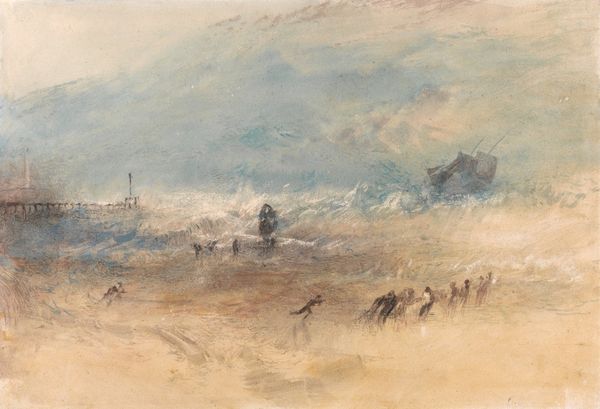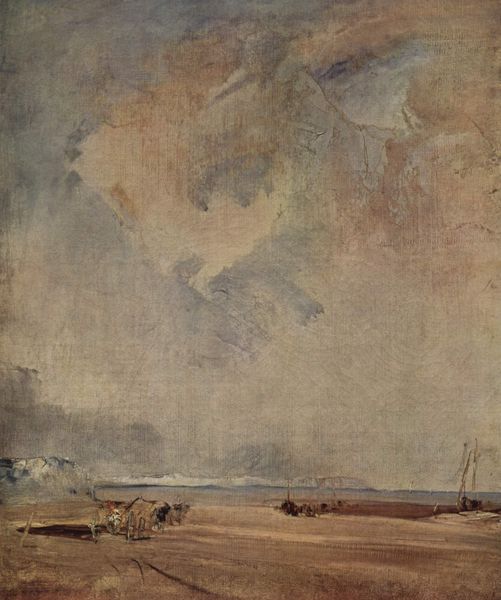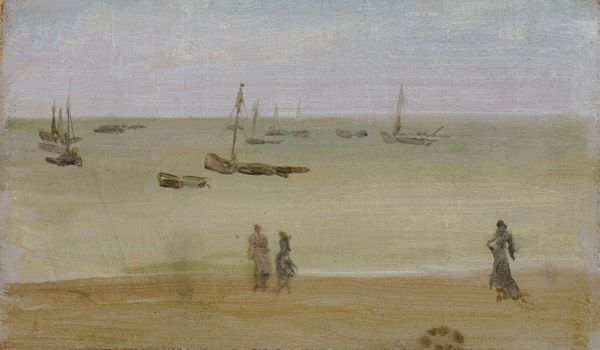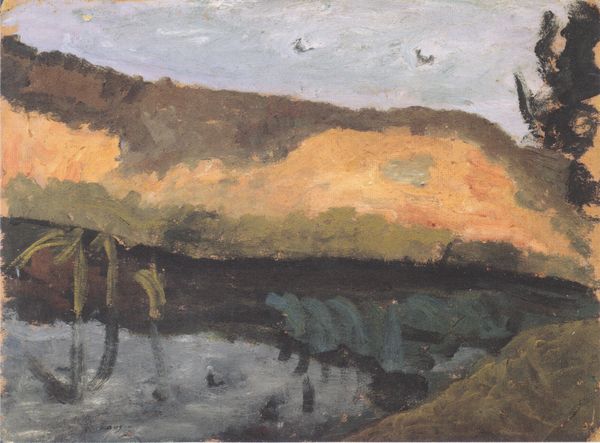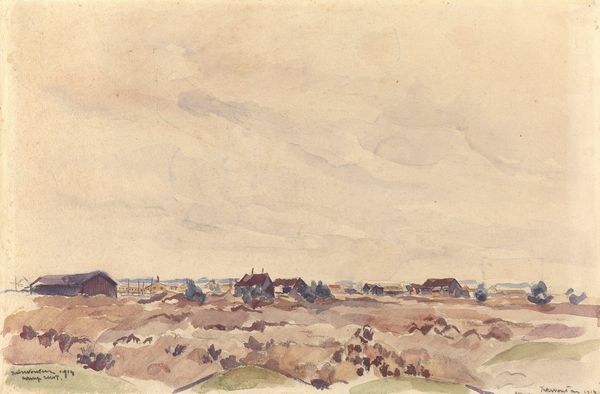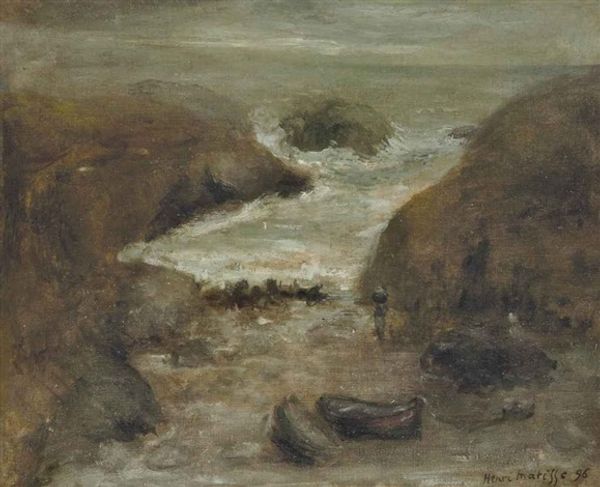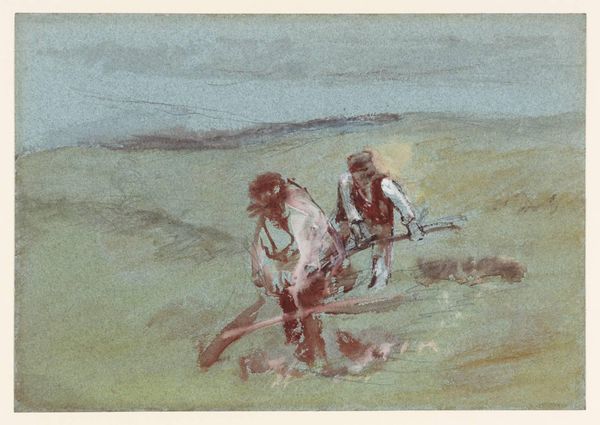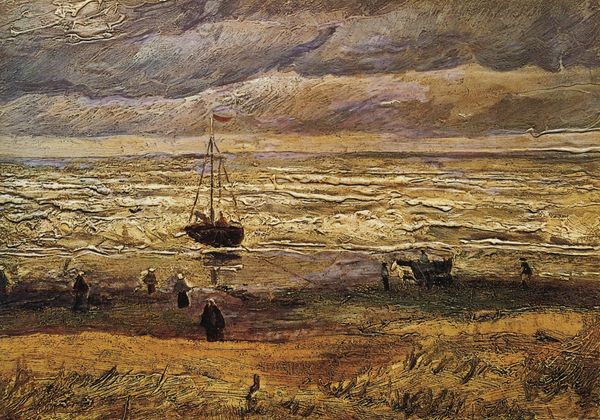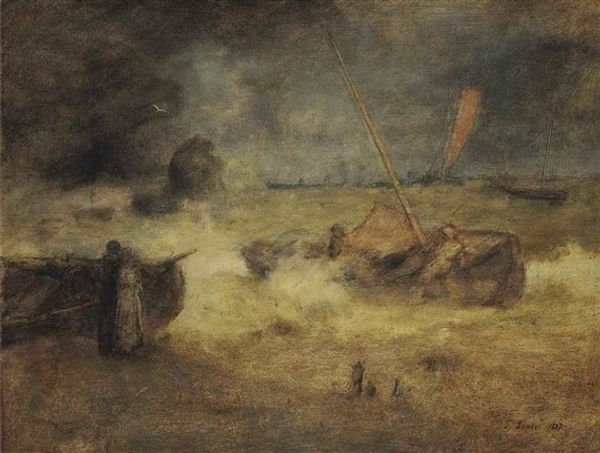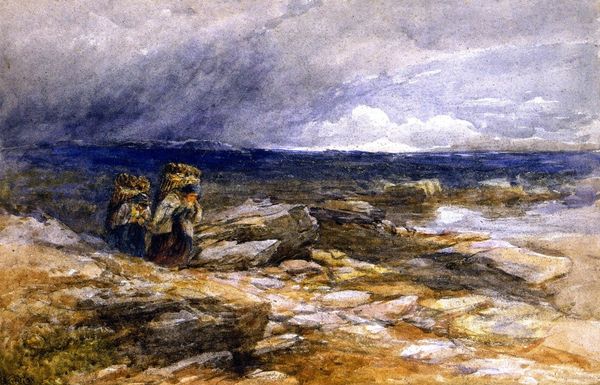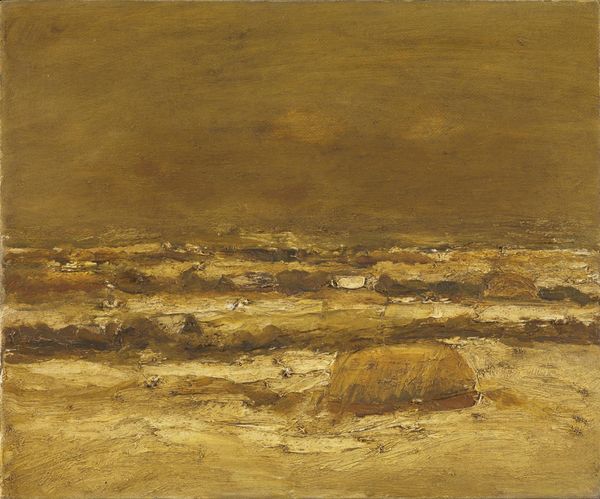
painting, plein-air, oil-paint
#
portrait
#
painting
#
impressionism
#
plein-air
#
oil-paint
#
landscape
#
figuration
#
oil painting
#
group-portraits
#
post-impressionism
Copyright: Public domain
Editor: So, here we have Vincent van Gogh’s "Dunes with Figures" from 1882. Painted with oils, it gives a muted, almost melancholic feeling. The figures seem lost in the vast landscape. What do you see in this piece, considering the time it was made? Curator: This work offers a window into Van Gogh’s early exploration of the social landscape and his emerging artistic concerns. Notice how he positions the figures within the environment. It speaks volumes about class, labor, and the artist’s own place within that societal framework. What do you think the vastness of the dunes represents in relation to these figures? Editor: Perhaps their struggle, or maybe their isolation. The figures are so small compared to the dunes, they appear almost insignificant. Curator: Precisely. Consider also that Van Gogh, at this time, was deeply interested in representing the lives of working-class people. This wasn't just aesthetic; it was a deliberate social and political statement. The muted tones, the heavy brushstrokes – they contribute to a sense of the weight and struggle of daily existence. How does this relate to the rise of Realism at that time? Editor: Well, Realism was all about depicting life as it truly was, without idealizing it. Van Gogh seems to be doing that here, but with a rawness that feels even more personal. It feels heavier. Curator: Exactly. It’s realism filtered through Van Gogh’s own empathetic lens. Understanding that historical context really shapes how we perceive not just the landscape, but the statement Van Gogh was making about the people within it. Editor: This piece really speaks to how art can be so intertwined with social commentary. I hadn’t thought about it in that way initially. Curator: It’s a reminder that art rarely exists in a vacuum; it’s always in dialogue with its time.
Comments
No comments
Be the first to comment and join the conversation on the ultimate creative platform.

